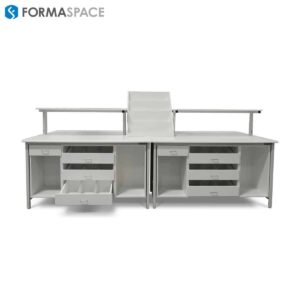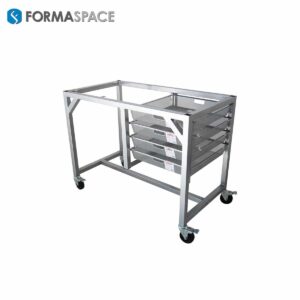Do you work from home these days?
As it turns out, more and more of us are doing just that.
According to the Survey of Income and Program Participation (SIPP) and the United States Census Bureau, about 9 percent of us (13.4 million workers out of 142 million) worked at home at least one day a week in 2014. That’s up 35% for the decade. And it’s the so-called Knowledge Workers in the computer, engineering and science fields that are really driving the the “working from home” model — their numbers increased 69% over the decade, with 432,000 of them working from home in 2014.
As we look around the country for regional trends, Boulder, Colorado was the breakout star, with 10.9% of workers working primarily from home. Looking at the larger, regional statistical reporting areas from the Census, here are the 10 metro areas with the highest percentage of full-time, home-based workers:
| Rank | Metropolitan Area | Number | Percent |
| 1 | Austin-Round Rock-San Marcos, TX | 61,911 | 7.3 |
| 2 | Portland-Vancouver-Hillsboro, OR-WA | 66,384 | 6.5 |
| 3 | Denver-Aurora-Broomfield, CO | 77,163 | 6.2 |
| 4 | San Jose-Sunnyvale-Santa Clara, CA | 126,057 | 6.2 |
| 5 | Phoenix-Mesa-Glendale, AZ | 106,373 | 6 |
| 6 | Raleigh-Cary, NC | 31,850 | 5.9 |
| 7 | Atlanta-Sandy Springs-Marietta, GA | 136,442 | 5.8 |
| 8 | Sacramento–Arden-Arcade–Roseville, CA | 48,880 | 5.5 |
| 9 | St. Louis, MO-IL | 90,098 | 5.5 |
| 10 | San Francisco-Oakland-Fremont, CA | 70,097 | 5.3 |
As outlined in the table above, the Austin, Texas region —home of Formaspace — led the pack with more than 7% of this region’s employees working at home.
Interestingly, the US Census notes there’s a definite regional trend underway: employers based in the West are much more likely to allow employees to work from home.
When Designing Your Home Office, You Should Determine ‘Which Kind of Home Office Worker are You?’
The U.S. Census breaks home-based workers into three categories:
- “Home Workers” who work at home exclusively
- “Mixed Workers” who split their time between home and a remote office
- “Onsite Workers” who work exclusive at a remote office.
But from our experience as suppliers of Home Office furniture and storage solutions, we go further. We break it down into seven categories, based on the type of work you’ll be doing from home.
The seven categories are:
- The “Always On” Home Extension of the Work Office
- The Growing “Hobby” Home Office
- The Delivery-Based “Transactional” Home Office
- The Small Repair Service Home Office
- The Vacation Rental Home Office
- The Personal Services Home Office
- The Traditional Home Office
The “Always On” Home Extension of the Work Office
Workers who constantly take their work back and forth between home and work need to create a space we call the “always on” home office.
It’s essentially an extension of your work office built in your home — a place where you can step inside and instantly be productive when you get that late night email from a customer or your boss.

The key tips for the “Always On” office space are:
- Maintaining sound privacy from other members of the household when the office needs to be used later at night or early in the morning.
- Conditioned power and battery backup as well as robust networking and VPN connections.
- Well-thought-out cabling connections that keep the jungle of wires under control so you have a neat and tidy place to work.
- A well-fitted ergonomic chair, and a Formaspace sit-to-stand computer workstation or desk that allows you to change positions throughout the day at the touch of a button, for improved circulation and better health.
- Storage lockers with key access to protect sensitive documents and possibly a fireproof safe as well.
- You may also need provisions for videoconferencing and a table for collaborating with coworkers or other guests who may join you at your private office at home.
The Growing “Hobby” Home Office
Many of us are exploring and investing major amounts of time (and a not an inconsiderable amount of money) into hobbies, some of which we intend to pursue as a small business venture in the future.
This category includes hobbies like photography, scrap-booking, sewing, model making, 3D printing, cake decorating, crafting and many many more.
The key tips for a growing hobby home office include:
- Providing generous amounts of built-in cabinets and secure storage for all your equipment and materials.
- Work benches and tables to spread out large projects.
- Flexible, modular furniture components that allow you to reconfigure your layout as your needs change.
- Built-in task lighting to support detailed hand work.
- Space for multiple people to occupy the office comfortably for group projects.
- Sit-to-Stand work surfaces that let you change position during the day to reduce fatigue and stress.
The Delivery-Based “Transactional” Home Office
Many home-based entrepreneurs are trading on internet retail sites such as eBay and Etsy. Most discover very quickly that they have to replicate a scaled-down version of a receiving, storing, packing and shipping warehouse in their home.
The key tips for the delivery-based transactional home offices include:
- Checking local zoning and Homeowner Association regulations for home-based delivery businesses. You’ll need adequate parking outside as well.
- Providing logical and sufficient areas for receiving goods, storing inventory, and packing and shipping goods for outbound delivery.
- Ensuring there is enough storage space for vital business records, including lockable cabinets and a fireproof safe installation.
- Creating sufficient space for delivery personnel to enter the office to deliver and receive goods as well as a pathway for them to access a restroom.
- Consideration should be given to your potential expansion plans. Always invest in modular furniture solutions which can be reconfigured as your space requirements change, or, if you move to a new, larger location.
- Provide a comfortable space for data entry to manage your online inventories; consider providing additional space for an assistance to help you as your business grows.
The Small Repair Service Home Office
As electronic devices become more central and ubiquitous in our lives, many entrepreneurs are opting to create home-based computer and mobile device repair shops. These can be as simple as small operations or repairing cracked smartphone screens, to larger areas needed to assemble or repair custom computers or customize small network server installations.

Of course this category also includes all other types of small repair operations, ranging from antique clocks and watches, to repairing jewelry, to fixing small household appliances.
The key tips for this type of small repair service enterprise and home office include:
- Make sure that your zoning permits this type of business and that you have adequate fire protection when dealing with repair tools in the home.
- Consider how you will vent fumes, if any, that arise from repair procedures.
- Provide adequate storage for spare parts inventory and tools. Also, when your customers drop off or pick up, they will appreciate if your office is clean and tidy and their own items are stored carefully.
- If you are working with electronics, to take advantage of Formaspace workstations with built-in ESD kits to prevent accidental damage to electronic equipment.
- You might also consider Formaspace tables and workstations with plastic laminate surfaces with rounded corners for easy cleanup and extended wear.
- Finally, built-in task lighting and Sit-to-Stand powered work surface technology will help reduce on your body when working throughout the day.
The Vacation Rental Home Office
Here’s a category you might not have thought about before. With the advent of Air B&B and other vacation rental sites, more and more people are considering renting out their primary home or their secondary vacation house to guests.
The idea of a vacation rental home office is twofold: first, it’s attractive to offer your guests a place where they can work while they are renting your home. Second, it’s important to keep your own items secured from prying eyes — yet easy to convert back to your own use when you return to your home office.
This also applies to traditional bed-and-breakfast operations: there needs to be a desk area for guest check-in and check-out which has provisions for things like credit card readers and computers to print out receipts. But, during other times of the day, this desk needs to be securely locked.
Key tips for vacation rental home offices include:
- Providing sufficient storage to securely lock away your private records, private computer and printers and networking equipment as needed. You probably also want to include an integrated fireproof safe.
- Creating open and inviting task areas for your guests when you are not there. This includes providing easy-to-use and robust guest networking solutions and possibly printer access.
- Purchase modular furniture that you can reconfigure and transport to another location should you eventually sell the property.
- Consider the Formaspace ‘Bench Plus’ solution, which is a hybrid reception and office desk solution.

The Personal Services Home Office
The personal services home office category is expanding rapidly. It ranges from providing the services of a physician, veterinarian, hair and nail salon or day spa, dental practice, massage and physical therapy, music lessons, yoga classes, coaching and tutoring to seasonal services, like tax return preparation.
Keep in mind that designs for personal services home offices vary considerably, depending on your unique business category.
Key tips for a successful personal services home office include:
- Customers will definitely be entering your home office space, so it needs to look professional, clean, organized and tidy. You will also need to make provisions for them to access a restroom.
- Because the public will be entering the office space, you need to provide secure locked storage for your private business records, including a fireproof safe.
- Personal services providing healthcare, whether to humans (physicians) or pets (veterinarians) need hygienic and easy-to-clean surfaces, so consider Formaspace’s line of stainless steel top workstations and desks.
- Check with your zoning and regulatory authorities to make sure that you can provide these services in a home office environment. Medical services and hair and nail salons will likely have special code requirements.
- Do not get locked into a permanent configuration for your furniture. Your business may grow or your target customer may change, so investing in modular furniture that you can reconfigure and possibly move to a new location is important.
- Consider your own personal ergonomic health when designing the primary place that you will work. Invest in a solid, comfortable and adjustable task chairs and Sit-to-Stand motorized desks that allow you to change positions throughout the day — to reduce work fatigue and increase your circulation.
The Traditional Home Office
Our final category is the original one that started it all, e.g. the original traditional home office where you open your mail, pay your bills, answer telephone calls and (in recent times) check the Internet.
Oftentimes, these traditional home offices can peacefully coexist with the other types of offices listed above, so don’t get tied into knots trying to design a one-size-fits-all home office when two separate ones is more practical.
The following list offers some key tips for creating a successful traditional home office:
- Keep in mind the goal for this type of office is to create a convenient place to keep household communication in order. You might take notes over several weeks on which tasks you need to manage before designing your new home office.
- Consider the workflow of your mail coming into the house and the traffic flow into your kitchen. You want an office location that is easy to get to, such as an alcove in a hallway or an extension of the kitchen. If the home office is out of the way, you won’t use it, and you’ll end up substituting the kitchen counter or the dining table as an ad hoc office replacement.
- Make sure you have adequate storage dedicated for the different tasks you want to accomplish, including scissors and box cutters for opening packages, tape for sealing packages, stamps for mailing letters, a printer for printing documents, a place to stash packing materials and a strategy for dealing with recyclables like cardboard boxes and plastic bags.
- It’s easy for this type of home office to get cluttered, so invest in custom drawers and shelving to keep things tidy.
- You might also want to consider a custom design with a folding door that encloses the entire space so that — when you are not working — you don’t have to look at the work in progress. This can also keep important documents away from curious children and inquisitive guests who may be visiting the home. Don’t limit your options: Formaspace can build any custom solution you can dream of.
Ready to make your Home Office work for you? Contact a Formaspace Design Consultant.
Did you know that you can call on the services of a Formaspace design consultant to get advice about how to build the perfect office for your own unique needs?
To get started, send an email to our design consultant team now at hello@formaspace.com and we will follow up with you to create your perfect work space. Together we’ll get your home organized and ready for productive work in no time. You’ll be glad you did.








